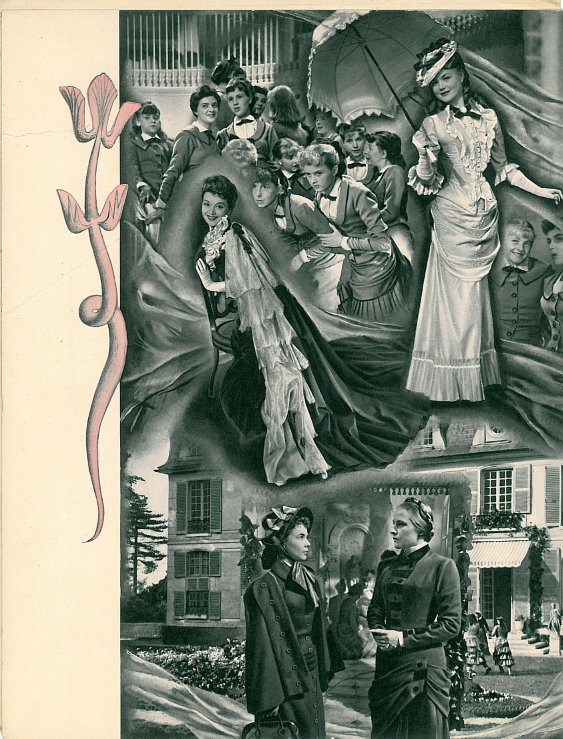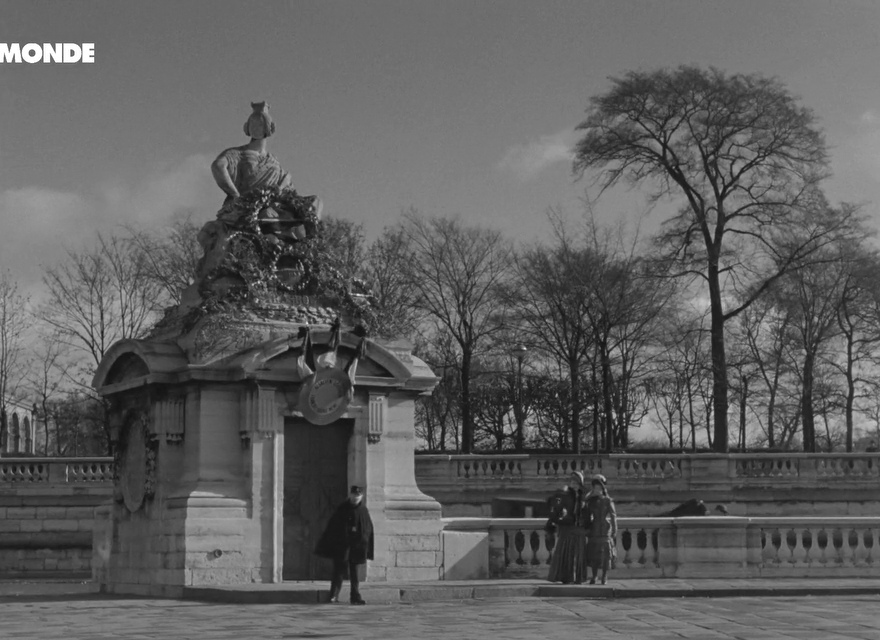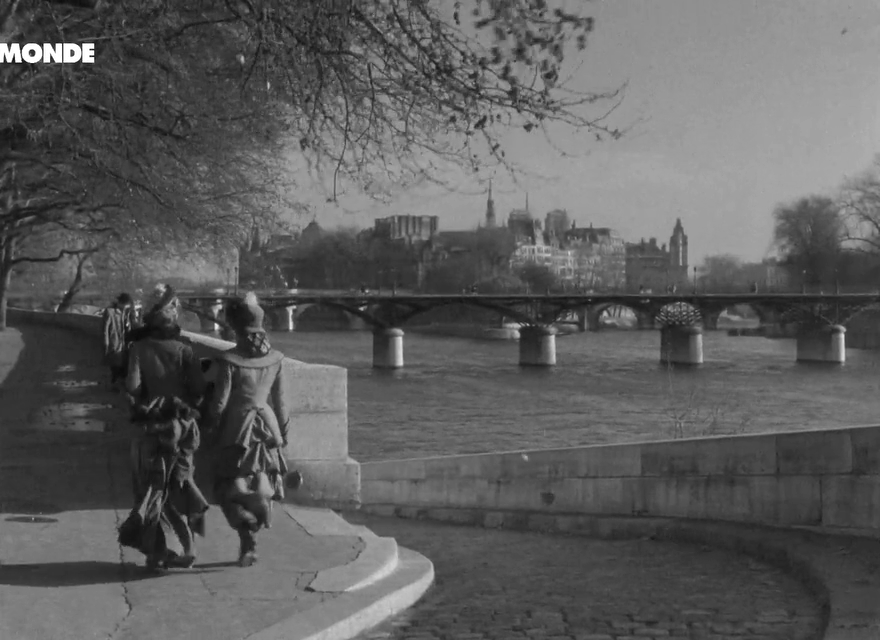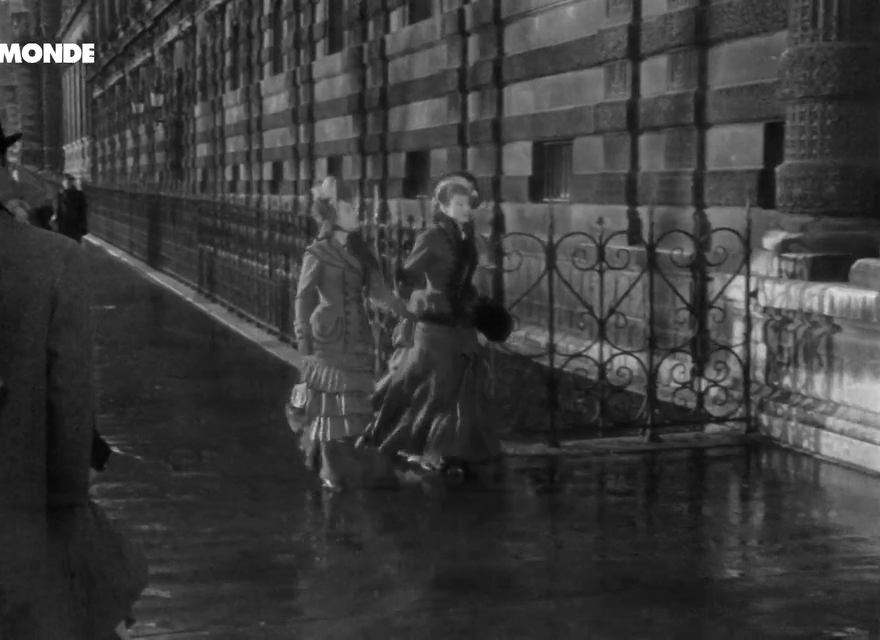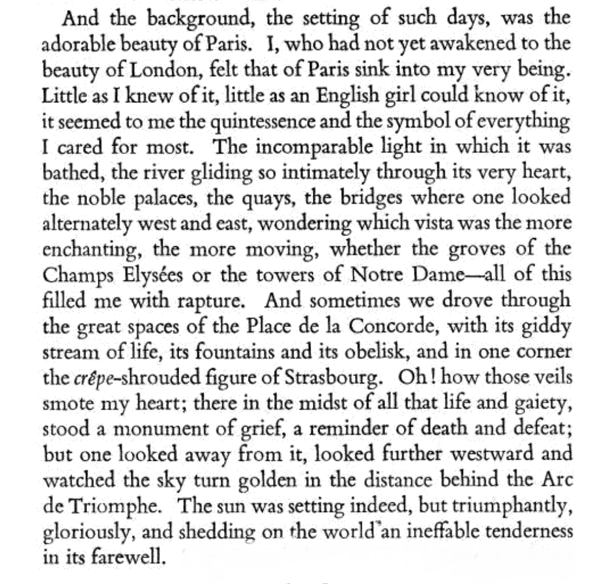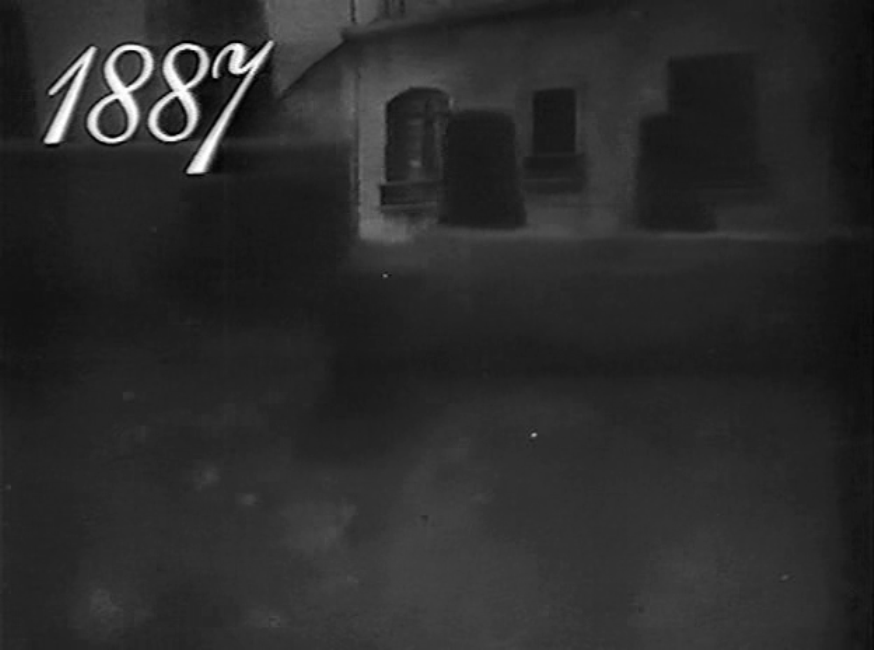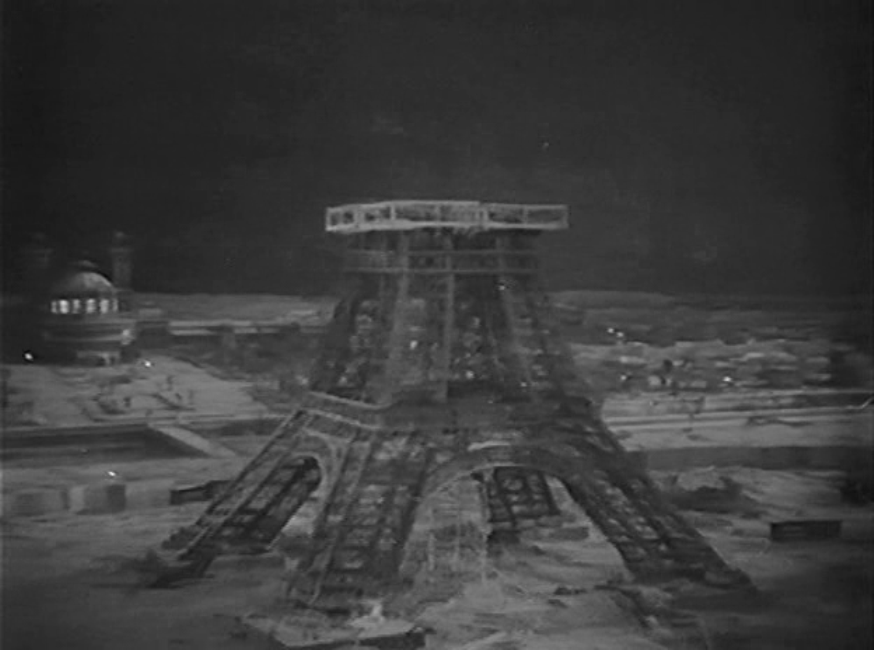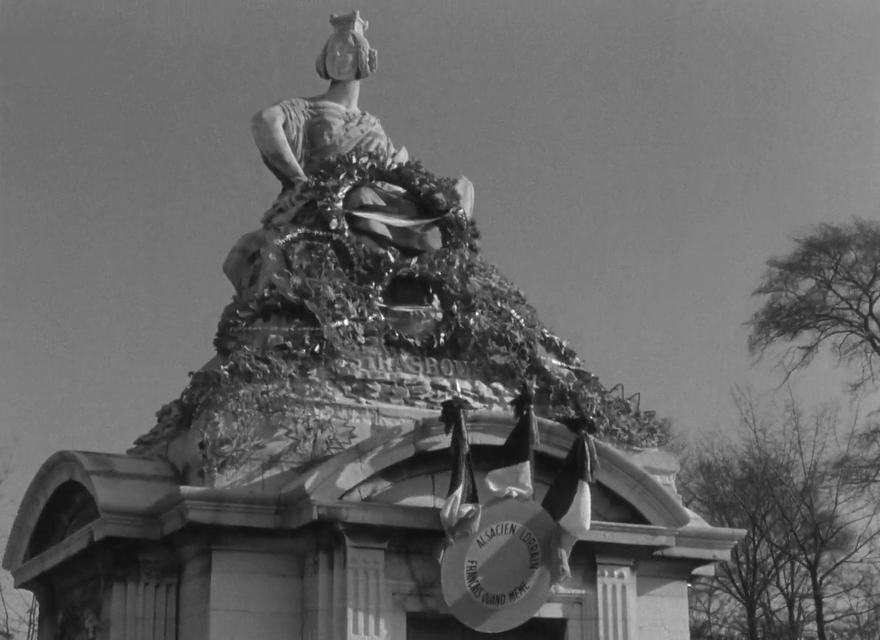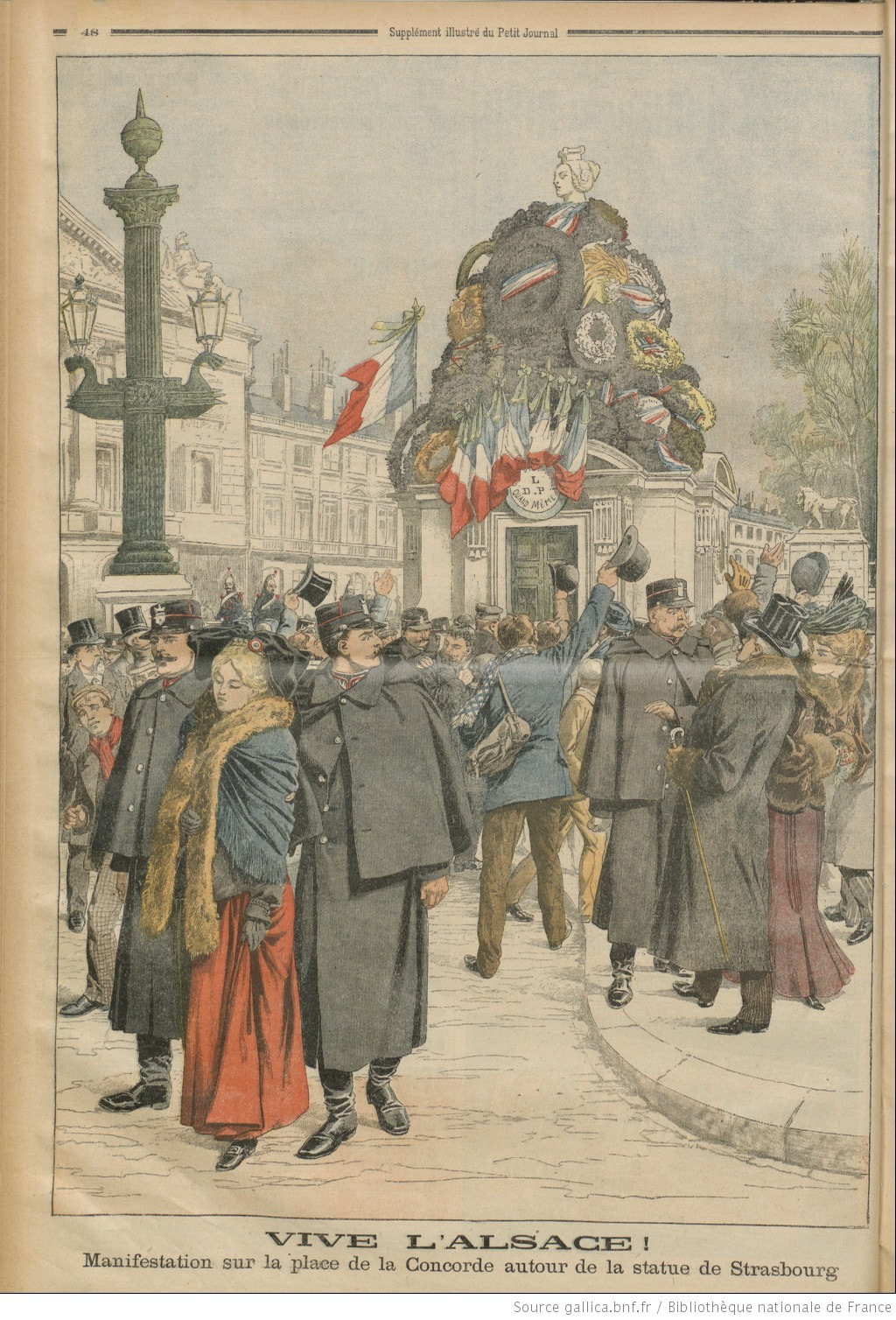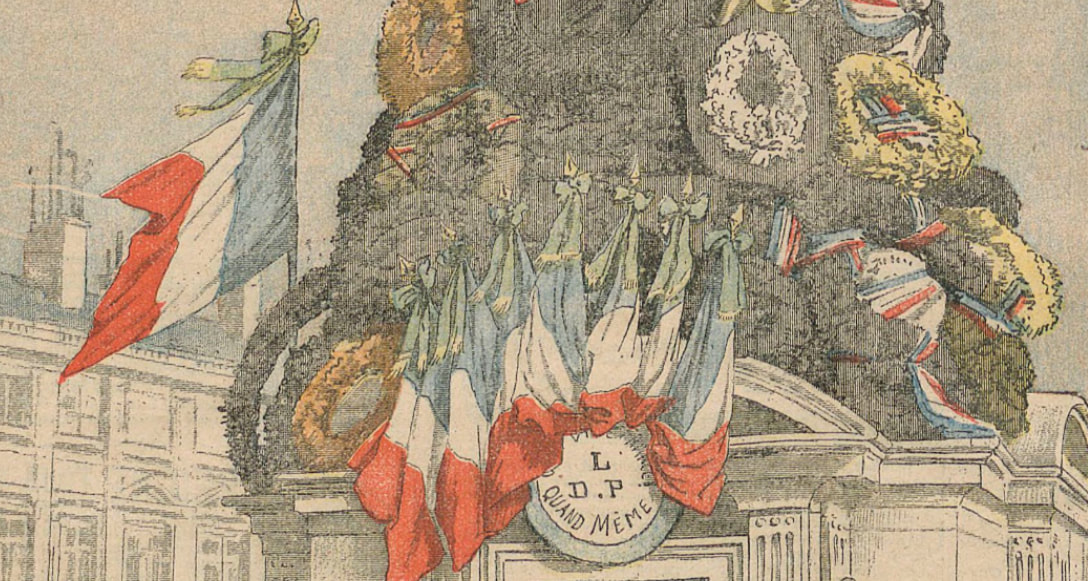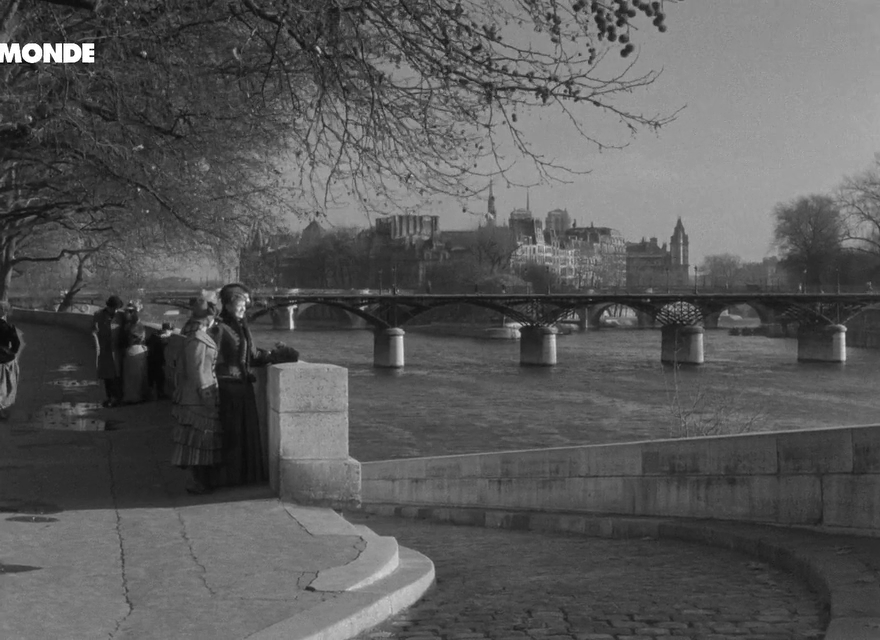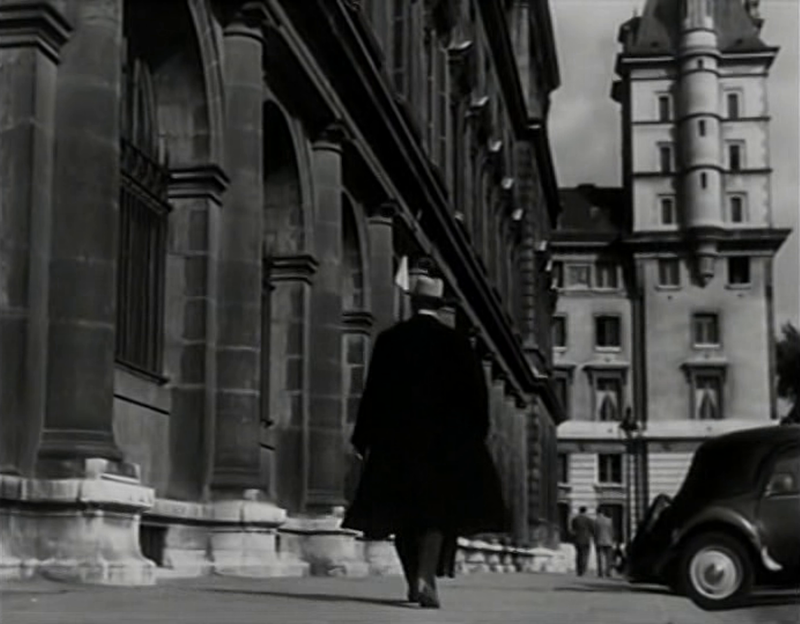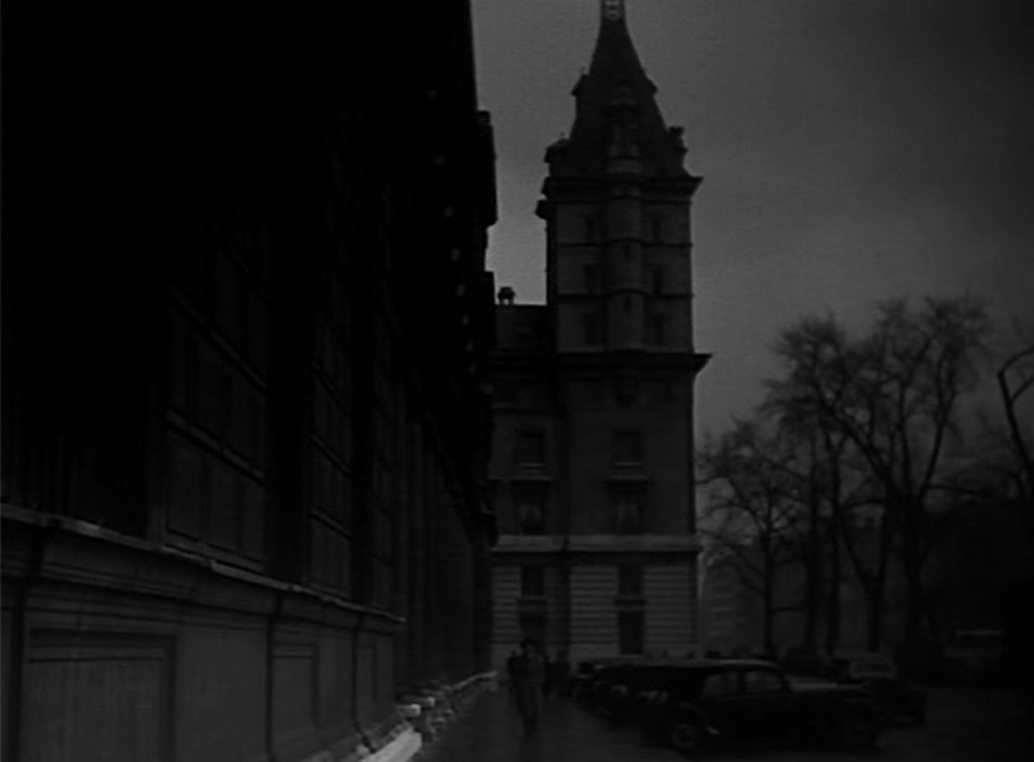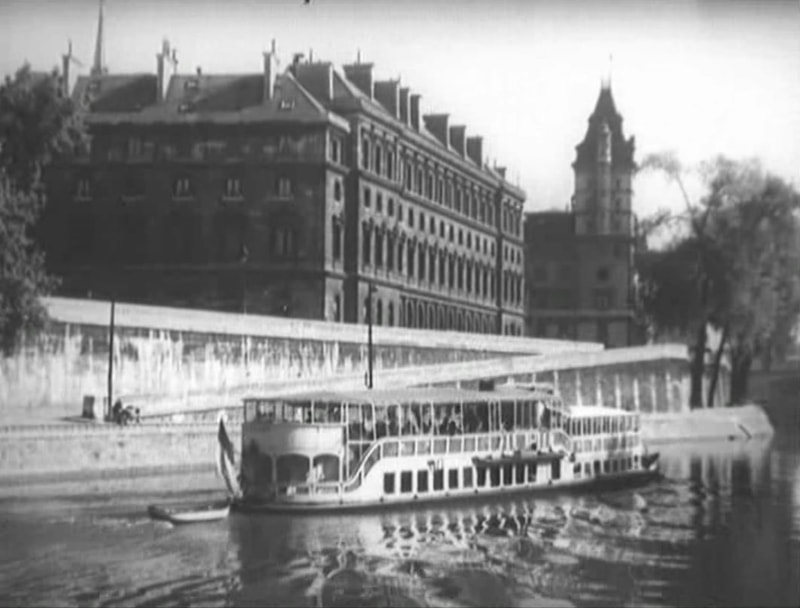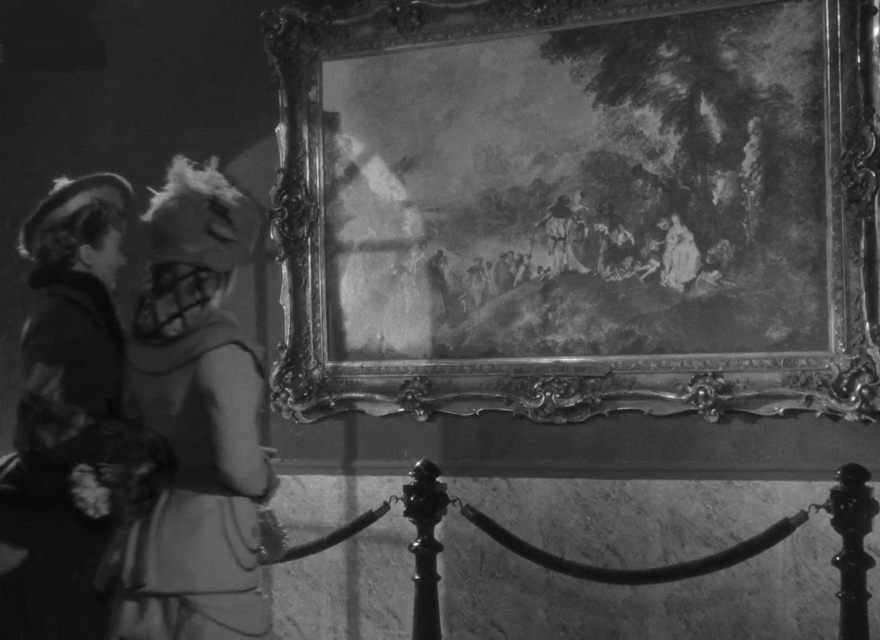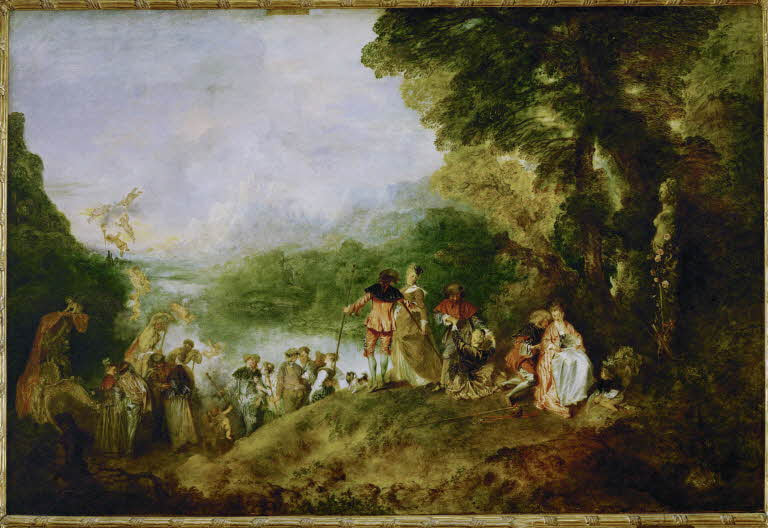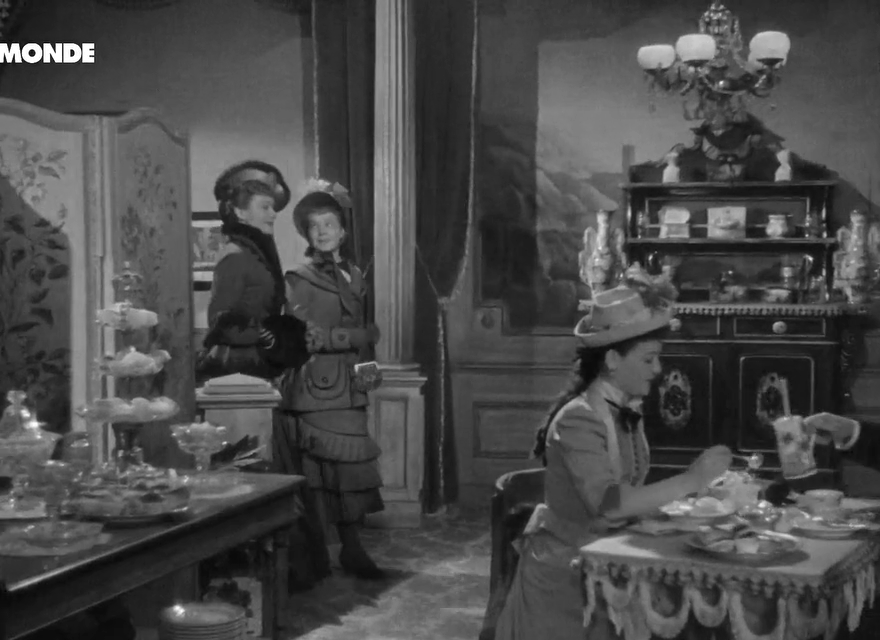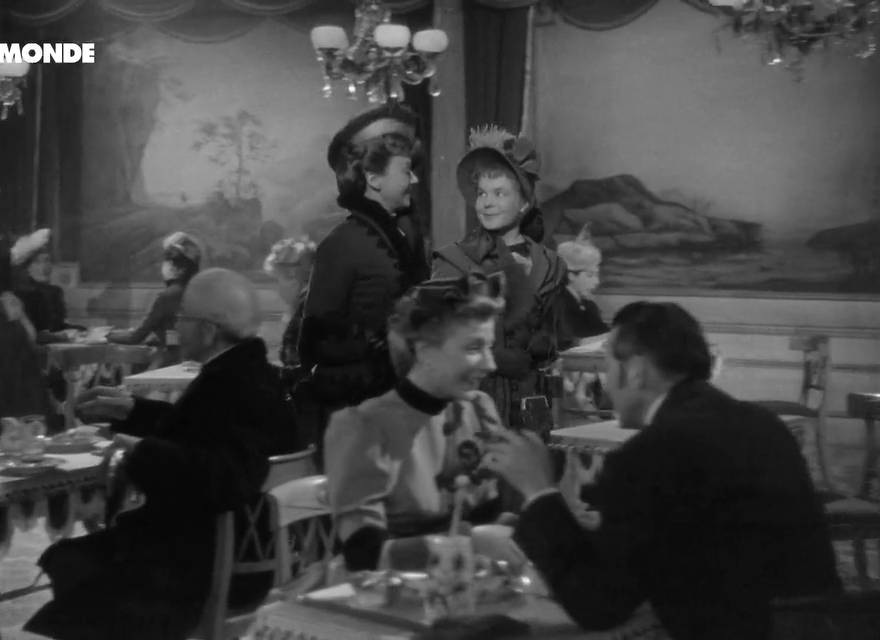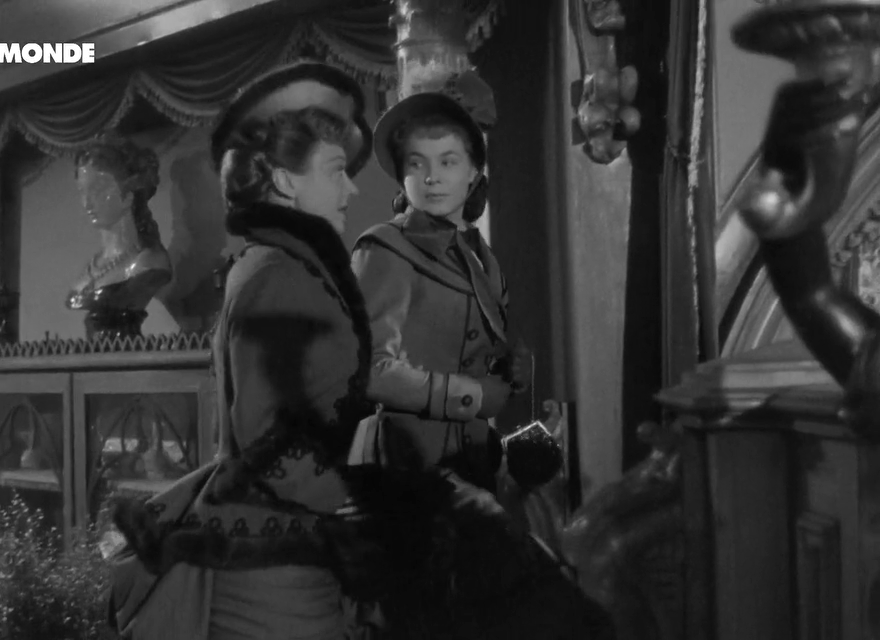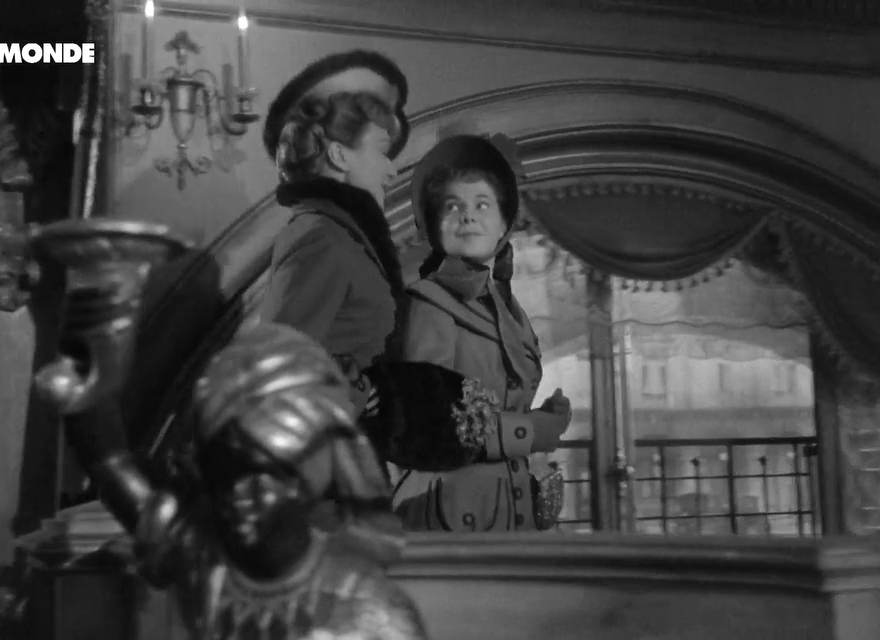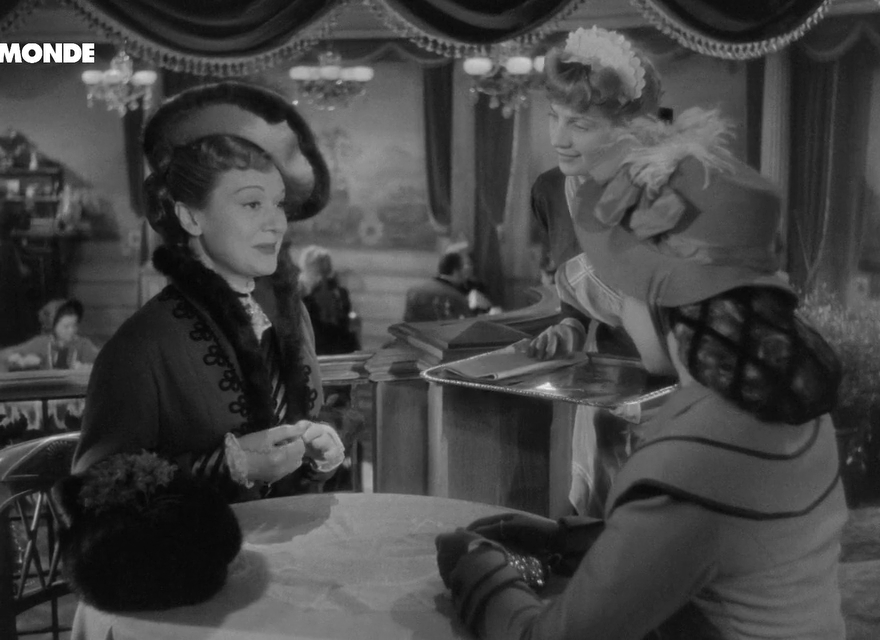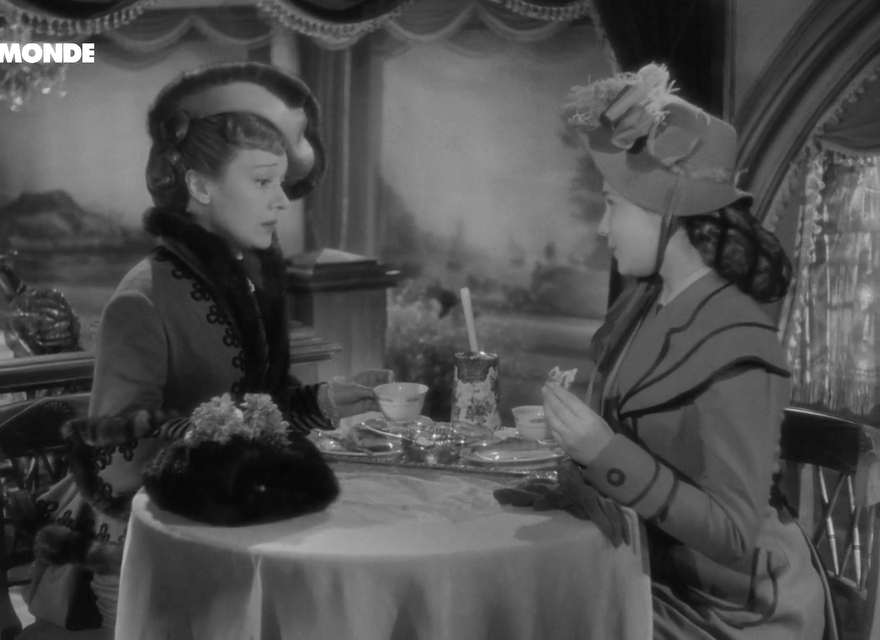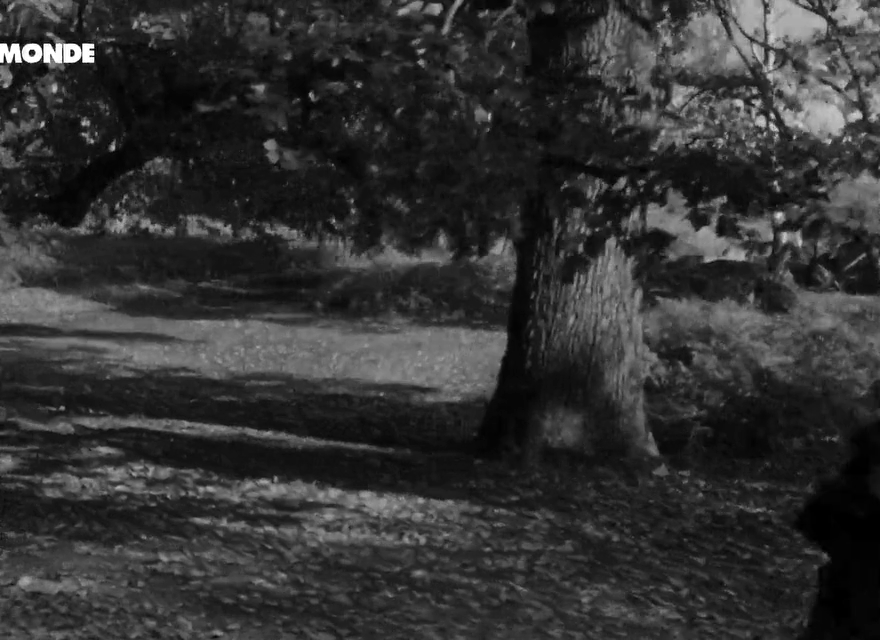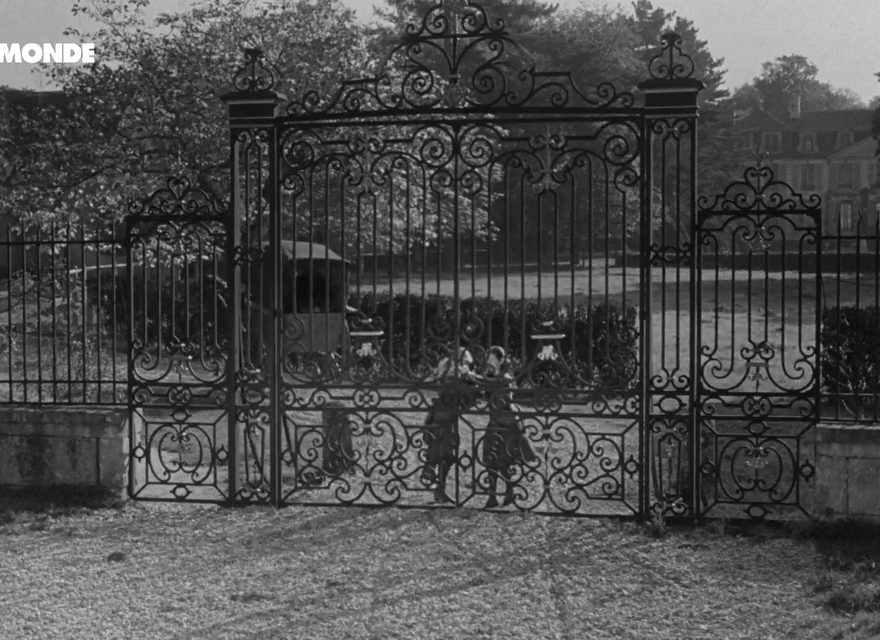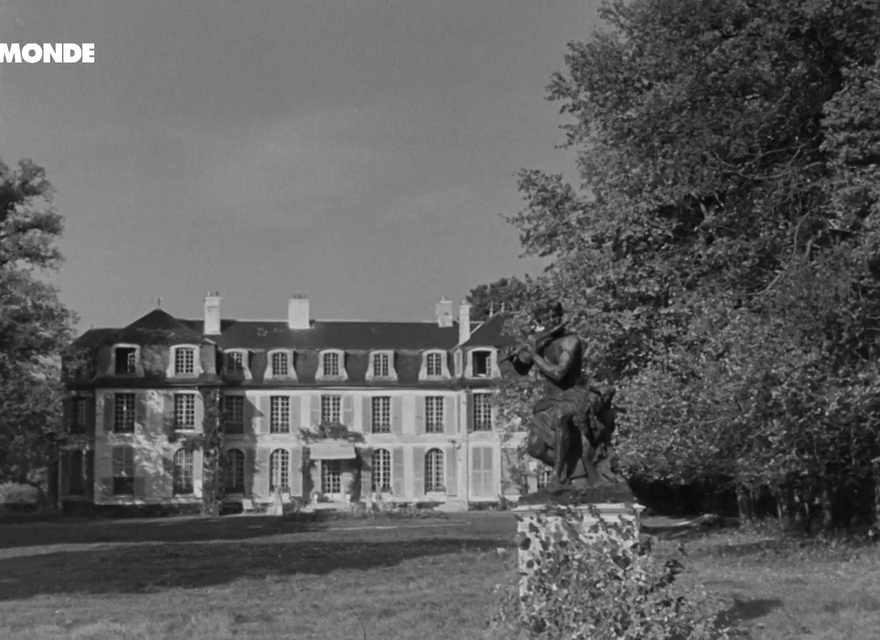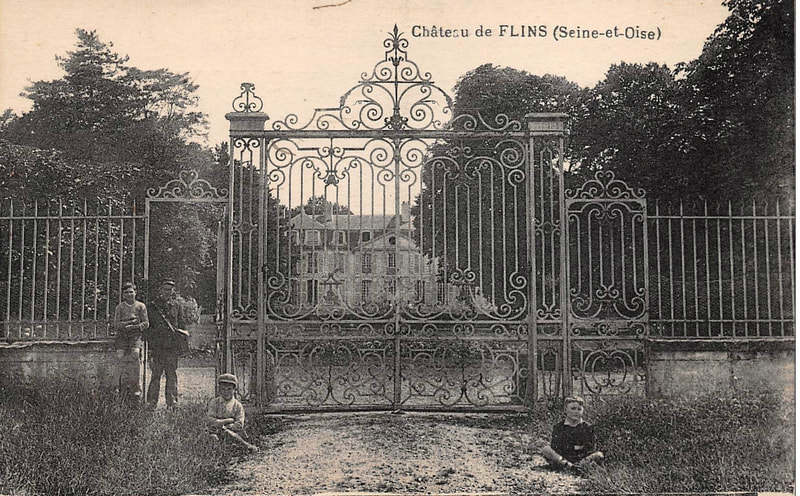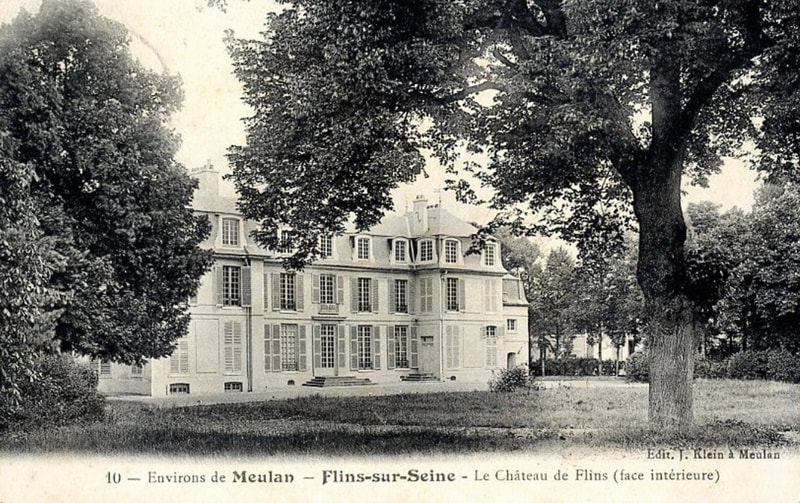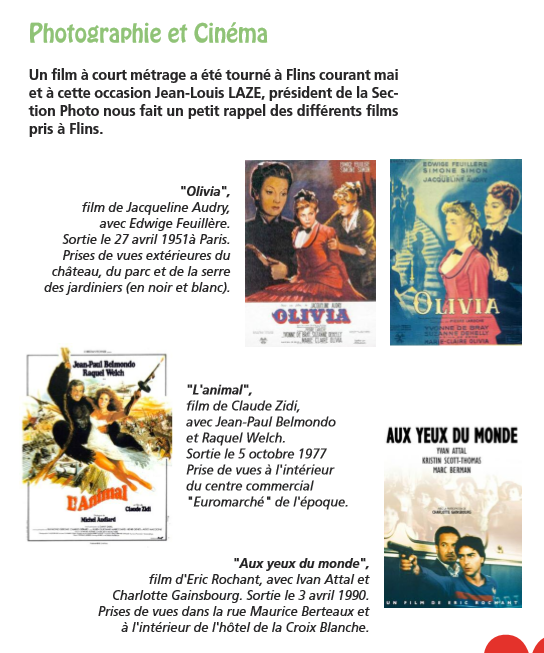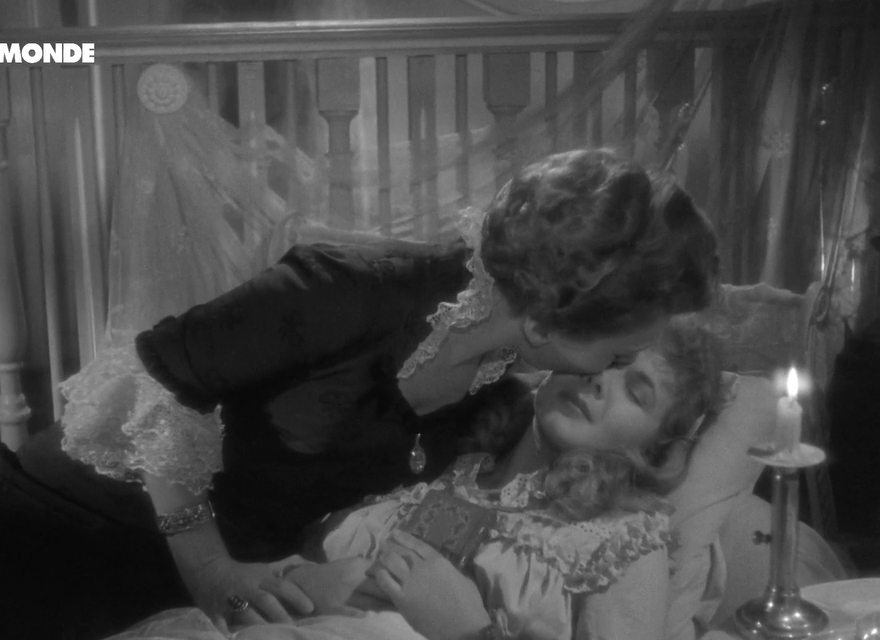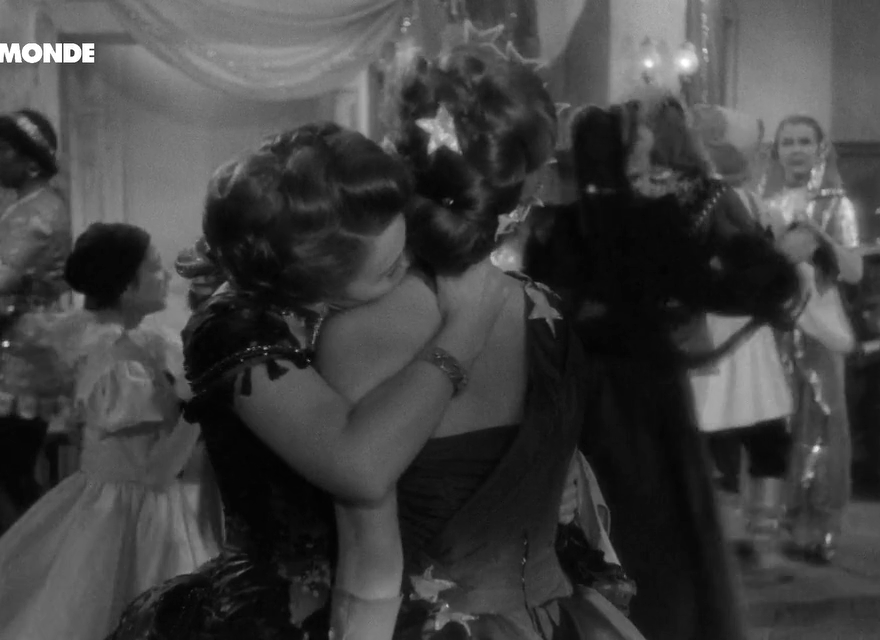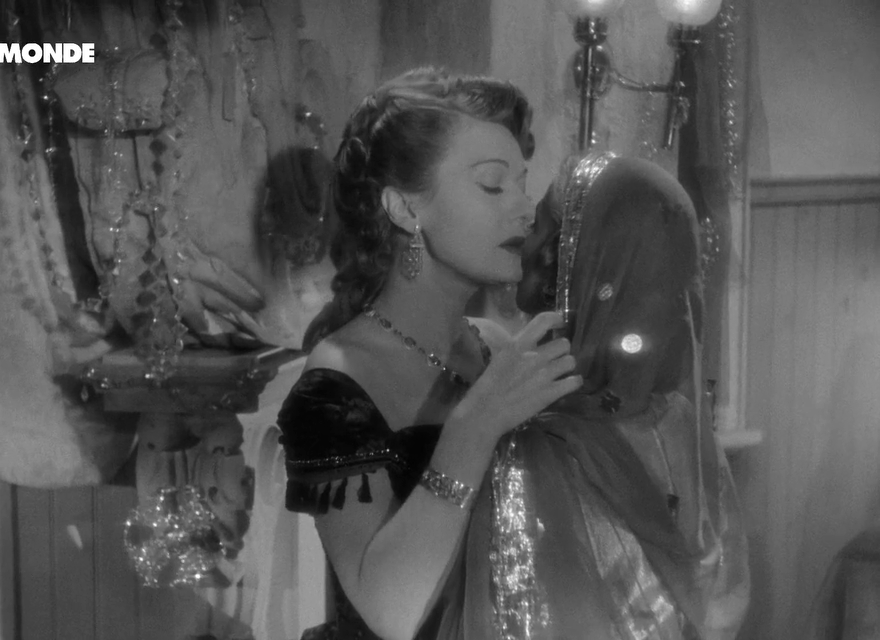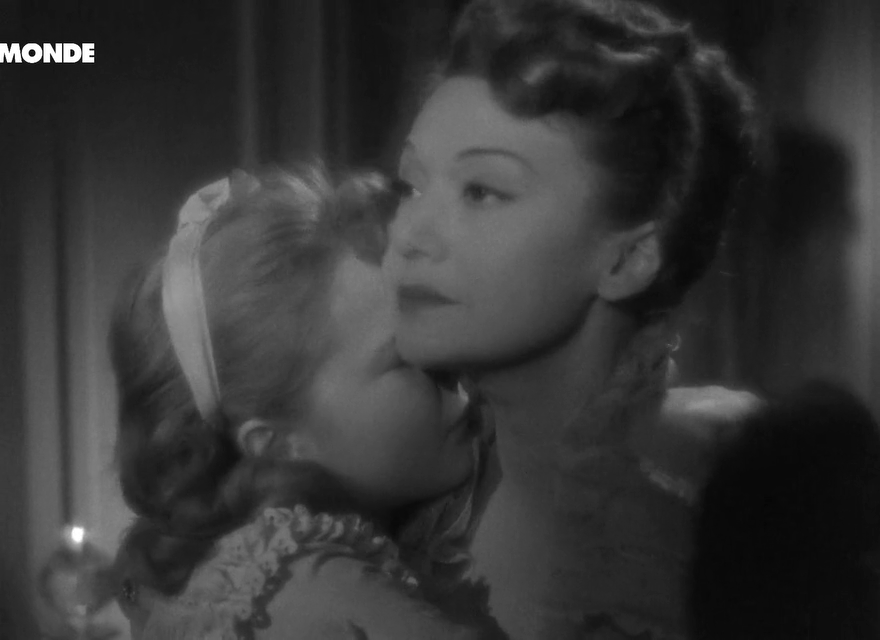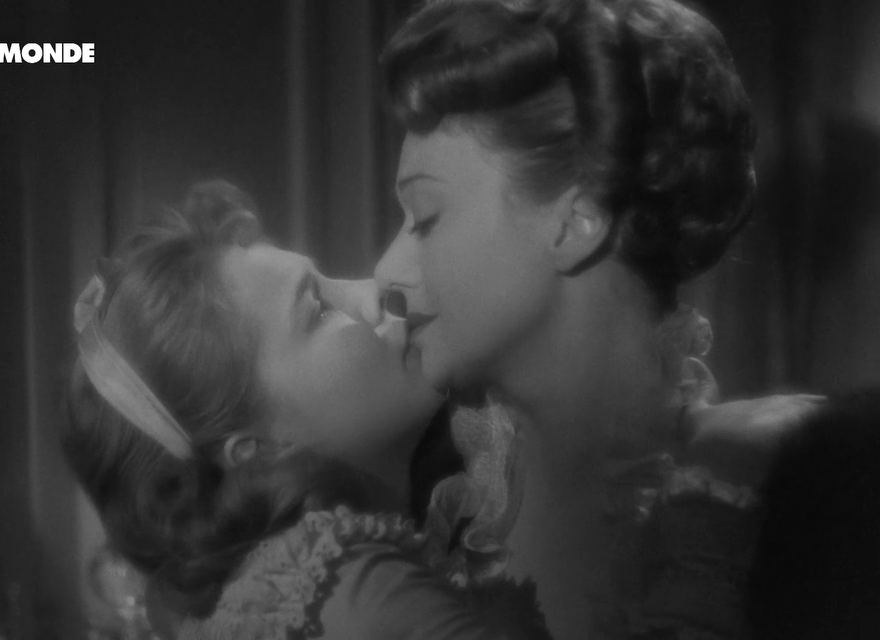Thirty-nine minutes into Jacqueline Audry's Olivia, based on Dorothy Bussy's 1949 novel of that name, we leave the febrile atmosphere of a girls' finishing school near Fontainebleau for an excursion to Paris. The headmistress Mademoiselle Julie has brought Olivia there as a stage in her épanouissement, her development. The eight-shot Paris sequence lasts just over three minutes and takes in five places. Three are exteriors - the Place de la Concorde, the Quai du Louvre, looking towards the Pont des Arts, and an entrance into the Louvre:
And two interiors, both studio constructions: inside the Louvre and inside a fashionable tea rooms.
|
The three exteriors are glimpses of a Paris untouched by modernity, addressing the difficulty of filming in 1950 scenes that are supposed to occur in the early 1880s, while remaining faithful to Paris locations evoked in the novel (right). It is true that the novel speaks of 'giddy streams of life' in the Place de la Concorde, while the film shows just the one isolated corner with its 'figure of Strasbourg', a solitary policeman, a passing horse-drawn cab and a woman with two small children. And it is true also that by the river the film only looks east towards 'the towers of Notre Dame', because if it turned west it might anachronistically glimpse the top of the Eiffel Tower. In 1943 Claude Autant-Lara's Douce had used a model of a half-built Eiffel Tower to indicate precisely the date of its action:
|
There are no other landmarks in Douce, since Autant-Lara's solution to rendering 1880s' Paris is to film entirely in studio-made interiors, many of them dark and claustrophobic.
Audry's Paris, by contrast, bathes in 'incomparable light'.
Curiously, each of the Olivia's three Paris exteriors is marked by a question of chronology. The 'crêpe-shrouded figure of Strasbourg', as described by Bussy, points specifically to the aftermath of the Franco-Prussian war of 1870, where Alsace-Lorraine was annexed and the city of Strasbourg taken away from France. The aspect of the statue in mourning, covered more in wreaths than crêpe, is approximately reproduced:
Audry's Paris, by contrast, bathes in 'incomparable light'.
Curiously, each of the Olivia's three Paris exteriors is marked by a question of chronology. The 'crêpe-shrouded figure of Strasbourg', as described by Bussy, points specifically to the aftermath of the Franco-Prussian war of 1870, where Alsace-Lorraine was annexed and the city of Strasbourg taken away from France. The aspect of the statue in mourning, covered more in wreaths than crêpe, is approximately reproduced:
|
The motto on the round panel - 'Alsacien Lorrain Français quand même' isn't the same as the one in the Petit Journal illustration above, bearing the initials L.D.P. This might not have been an anachronism in the film, since Paul Déroulède's Ligue des Patriotes was founded in 1882, but it would probably have been too obscure a historical reference for a 1950s audience.
|
The narrator's comment on this sight in the novel is transposed in the film to Mademoiselle Julie: 'Always remember this poor city of Strasbourg, symbol of death and defeat in a place teeming with life.'
The film's second Paris exterior, looking across the Seine towards the Pont des Arts, is a well-chosen vantage point in that there would be no anachronistic motor traffic crossing a bridge reserved for pedestrians. However, the view includes the distinctive tower of the P.J. headquarters, Quai des Orfèvres, which dates from about thirty years later:
Above are views of the Quai des Orfèvres from films made around the same time as Olivia. (See here for more appearances of this building.)
Olivia's last Paris exterior, an entrance into the Louvre, would seem to be sure of avoiding anachronism, but after Mademoiselle Julie and Olivia have entered the museum the camera makes a point of panning upwards to show the name of the entrance:
Henry Barbet de Jouy was a curator at the Louvre whose efforts helped save the museum from being destroyed under the Commune in 1871, so to see his name is to connect with the period evoked by the statue of Strasbourg in mourning. However, this entrance, originally known as the Porte Jean Goujon, was only dedicated to the memory of Barbet de Jouy, 'le sauveur du Louvre', in 1930, more than forty years after the visit of Olivia and Mademoiselle Julie.
Inside the Louvre Mademoiselle Julie tells Olivia about Watteau's 'Pélérinage à l'île de Cythère', from 1717:
The setting for the rest of the film is Les Avons, a finishing school near Fontainebleau, south of Paris. The opening credits play over a tracking shot through rocky woodland, and do appear to show the forest of Fontainebleau:
The location used for the school itself, however, is nowhere near Fontainebleau:
The Château de Flins-sur-Seine is now the mairie of that town, which is in the Yvelines, north-west of Paris. I haven't visited yet so cannot tell for sure if any interior scenes of Olivia were filmed there, but I very much doubt that. Here is a photograph taken in the mairie, in a décor that doesn't match anything we see in the film, and a 2016 notice celebrating the use of Flins as a film location:
Place and time are of only minor concern to readers of Audry's film. The obvious interest lies in the transposition of what made the source novel's reputation, the depiction of lesbian desire. Even if the film tones down that aspect of the book, there are moments of sensual contact that are clearly rendered with erotic enthusiasm:
The excellent feminist film journal Another Gaze will be presenting a screening of Olivia this coming Tuesday, March 10th, at the Regent Street Cinema in London, with an introductory essay by Emma Wilson.
I am indebted to Brigitte Rollet for guidance in identifying the location used for the school, and strongly recommend her book Jacqueline Audry, la femme à la caméra (Presses Universitaires de Rennes, 2015).
See also the detailed commentary (in French) and dossier of materials compiled for the Cinémathèque française by Tania Capron, here.
See also the detailed commentary (in French) and dossier of materials compiled for the Cinémathèque française by Tania Capron, here.
